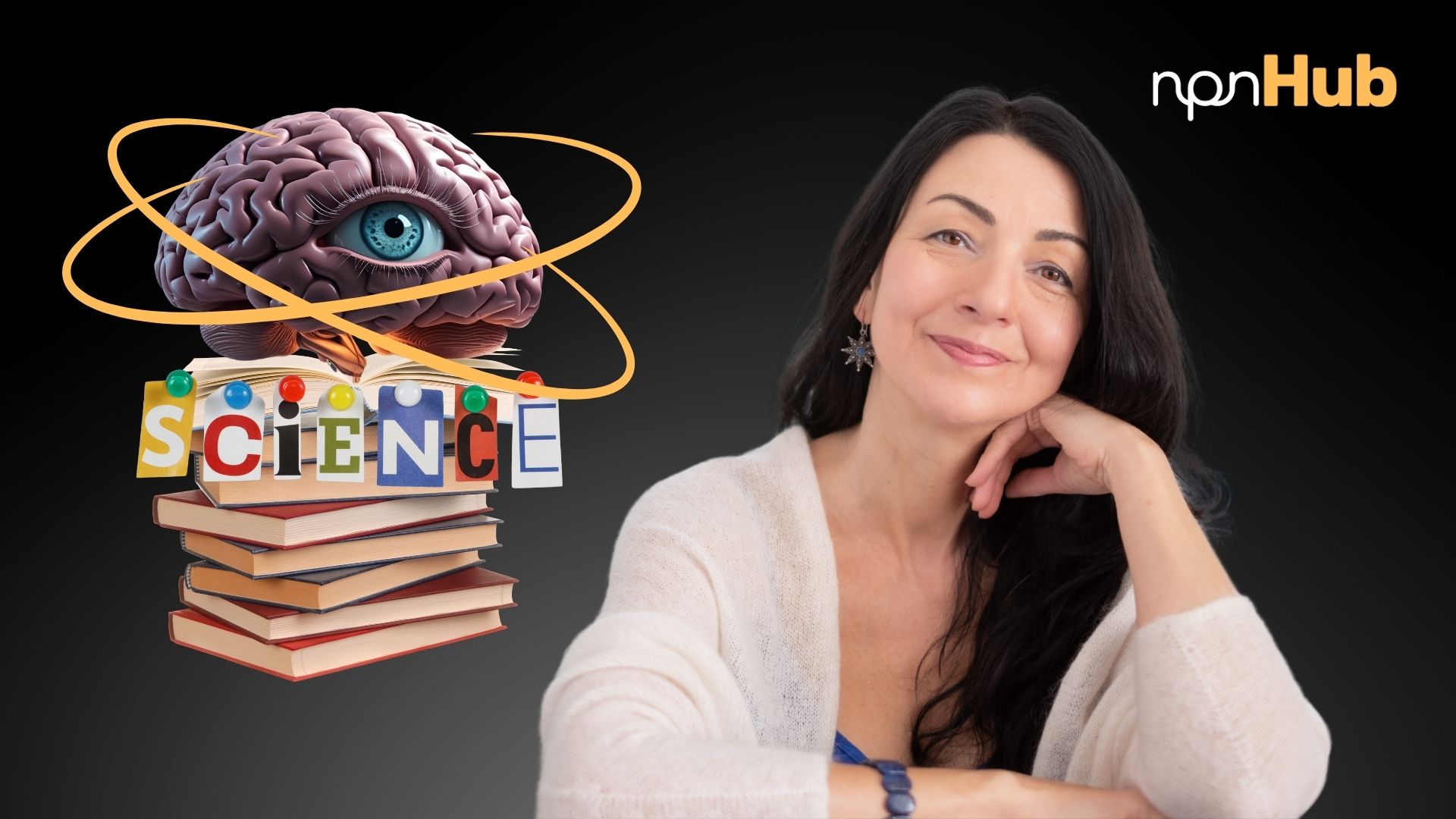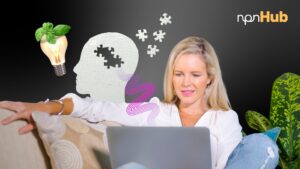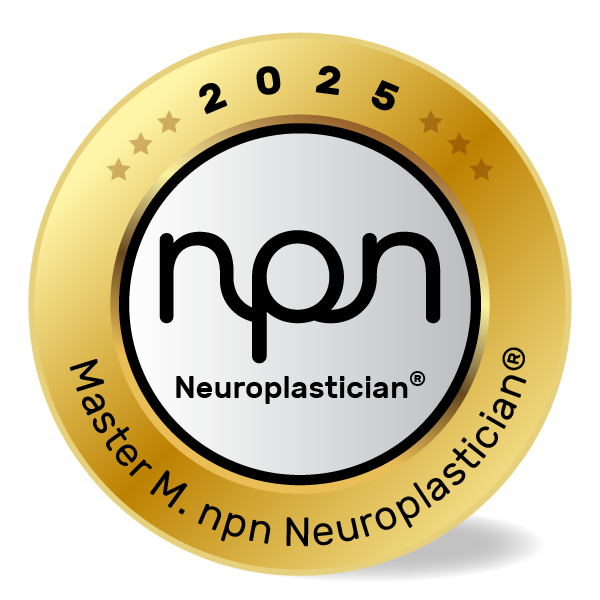How Interoception, Intuition, and Predictive Processing Shape Human Perception and Decision-Making
npnHub Editorial Member: Dr. Justin Kennedy curated this blog
Key Points
- The “sixth sense” is grounded in neuroscience through mechanisms like interoception and predictive coding.
- Intuition is not mystical, it’s shaped by subconscious neural computations.
- Brain regions like the insula, anterior cingulate cortex, and basal ganglia are central to sixth sense phenomena.
- Understanding the sixth sense helps neuroscience practitioners enhance decision-making and self-awareness.
- Interventions like mindfulness, body scanning, and emotional labeling support sixth sense development.
1. What is the Sixth Sense?
A neuroscience coach observes their client’s recurring gut instincts about team dynamics. The client, though often unsure how to verbalize their sense, is consistently accurate. Rather than dismissing it as coincidence, the coach begins exploring interoceptive awareness and emotional recognition.
This story is illustrative – not a scientific study – but mirrors what many practitioners observe.
The term “sixth sense” often conjures images of supernatural abilities. But in neuroscience, it refers to interoception – the brain’s ability to perceive internal bodily states like heartbeat, hunger, or tension. It’s also closely tied to intuition, which emerges from the brain’s ability to rapidly process past experiences and emotional cues without conscious thought.
Researchers like Dr. Bud Craig at the Barrow Neurological Institute have demonstrated that the anterior insular cortex plays a crucial role in translating bodily signals into subjective awareness – essentially allowing us to “feel” what’s happening inside us (Source). This insight offers a grounded way to understand what we commonly call the sixth sense.
2. The Neuroscience of the Sixth Sense
During a wellbeing workshop, a facilitator introduces a brief body scan meditation. One participant becomes aware of tension in their chest they hadn’t noticed before. Later, they realize this sensation consistently precedes anxiety episodes.
Again, this is illustrative, but reflects a common client experience.
Neuroscientifically, the sixth sense integrates interoception, predictive processing, and emotional memory. The insula decodes internal sensations like heart rate or temperature. The anterior cingulate cortex integrates these signals with attention and emotion, while the basal ganglia filter relevant patterns, often producing what we interpret as a “gut feeling.”
This intuitive sensing isn’t mystical, it’s rooted in how the brain uses internal signals and past patterns to predict outcomes before the rational mind catches up. Neuroscientist Dr. Antonio Damasio famously called this the “somatic marker hypothesis” – suggesting bodily signals guide decision-making before we’re even aware of them (Oxford).
The sixth sense is ultimately an embodied prediction system, fueled by data from both body and brain.
3. What Neuroscience Practitioners, Neuroplasticians and Well-being Professionals Should Know About the Sixth Sense
An educator notices one student responding to classroom shifts before others – picking up on social cues quickly, sensing tension in the room. The teacher, trained in applied neuroscience, recognizes the student’s heightened interoceptive awareness and emotional sensitivity.
This is an illustrative story, not empirical evidence, but it mirrors what many professionals see.
Understanding the sixth sense as a cognitive process rather than a mystic gift is essential. It’s often misunderstood as magical or unreliable. However, intuitive insights are typically grounded in unconscious pattern recognition.
Some common practitioner questions include:
- How do I help clients differentiate real intuition from anxiety or fear responses?
- Can interoception be improved with training or is it fixed?
- What brain-based strategies strengthen this ability without over-intellectualizing it?
As neuroscientist Lisa Feldman Barrett notes, emotions and bodily states are constructed, not merely reacted to. The sixth sense relies on recognizing and interpreting those constructions correctly (NIH).
Understanding these mechanisms helps practitioners fine-tune interventions for decision-making, emotional intelligence, and embodied leadership.
4. How the Sixth Sense Affects Neuroplasticity
The brain’s sixth sense-related processes rely on repeated internal feedback loops. Every time a person becomes aware of their heart rate during stress, or listens to a subtle “gut signal” and sees it confirmed, those neural circuits are strengthened.
Neuroplasticity allows the insula, amygdala, and prefrontal cortex to reinforce connections between bodily cues and emotional responses. For example, mindfulness meditation has been shown to increase gray matter in the insula, improving interoceptive accuracy (Lazar et al., 2005).
Over time, people trained in somatic awareness or emotional tracking develop faster and more accurate sixth sense responses. This makes intuitive decision-making more reliable – not because it’s magic, but because the brain has trained itself to notice and act on subtler signals.
5. Neuroscience-Backed Interventions to Improve the Sixth Sense
Why Behavioral Interventions Matter
Clients often operate in high-pressure environments that override intuitive signals. For neuroscience professionals, integrating sixth sense enhancement tools into practice helps clients reconnect with embodied awareness – enhancing resilience, creativity, and clarity.
1. Interoceptive Training
Concept: Strengthening interoception enhances self-awareness and emotional regulation (NIH on interoception).
Example: A coach works with a high-performing leader who misreads emotional cues. Using breathwork and heart rate tracking, the leader learns to connect internal signals to emotional responses.
✅ Intervention:
- Start sessions with short body scans.
- Use pulse-tracking tools like HeartMath for feedback.
- Encourage journaling on internal sensations during key decisions.
2. Mindful Somatic Reflection
Concept: Mindfulness increases insula activity, improving awareness of bodily signals (Harvard Mindfulness Research).
Example: A therapist incorporates 2-minute stillness exercises to help clients recognize emotional states before they escalate.
✅ Intervention:
- Include brief check-ins on body tension or breath.
- Train clients to pause before responding.
- Reinforce moments when intuitive awareness helps problem-solving.
3. Emotional Labeling
Concept: Naming emotions reduces amygdala activation and supports accurate self-perception (Lieberman et al., 2007).
Example: An educator trains teens to “name it to tame it” when stress arises.
✅ Intervention:
- Use emotion wheels to build vocabulary.
- Teach the “Name, Frame, Reframe” technique.
- Encourage reflective journaling post-trigger.
6. Key Takeaways
The sixth sense is not fiction – it’s neurobiology. Practitioners can harness its power by strengthening client awareness of internal states, intuitive decision-making, and embodied cognition.
Neuroscience has demystified intuition. Through the insula, basal ganglia, and cingulate cortex, the brain processes internal signals and transforms them into action. By training these pathways, practitioners can help clients make faster, smarter, more integrated decisions.
🔹 The sixth sense is grounded in interoception and subconscious prediction.
🔹 Brain regions like the insula and ACC interpret bodily signals and emotional cues.
🔹 Intuition improves with neuroplasticity and training, especially through mindfulness.
🔹 Practitioners can use science-backed methods to enhance sixth sense awareness.
7. References
- Craig, A. D. (2009). How do you feel—now? The anterior insula and human awareness. Nature Reviews Neuroscience, 10(1), 59–70.https://www.nature.com/articles/nrn2555
- Damasio, A. R. (1994). Descartes’ Error: Emotion, Reason, and the Human Brain. Putnam.https://ahandfulofleaves.wordpress.com/wp-content/uploads/2013/07/descartes-error_antonio-damasio.pdf
- Barrett, L. F. (2017). How Emotions Are Made: The Secret Life of the Brain. Houghton Mifflin Harcourt.https://psycnet.apa.org/record/2017-26294-000
- Lazar, S. W., et al. (2005). Meditation experience is associated with increased cortical thickness. NeuroReport, 16(17), 1893–1897.https://doi.org/10.1097/01.wnr.0000186598.66243.1
- Lieberman, M. D., et al. (2007). Putting feelings into words. Psychological Science, 18(5), 421–428. https://www.ncbi.nlm.nih.gov/pmc/articles/PMC2424174/















